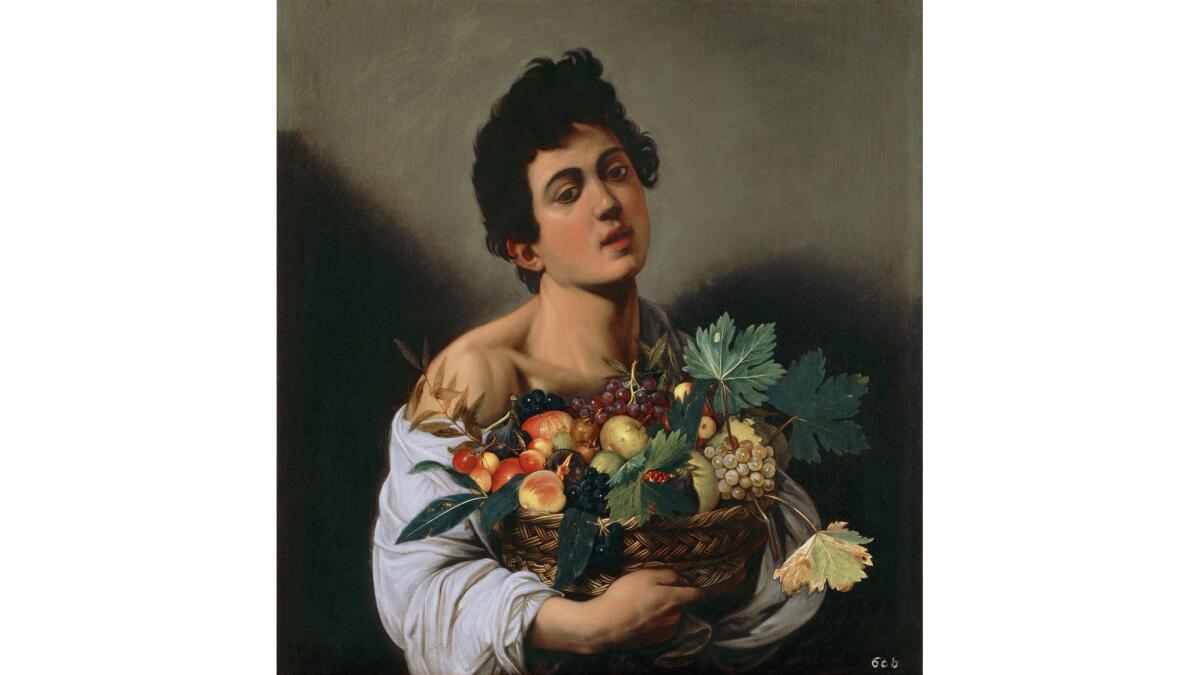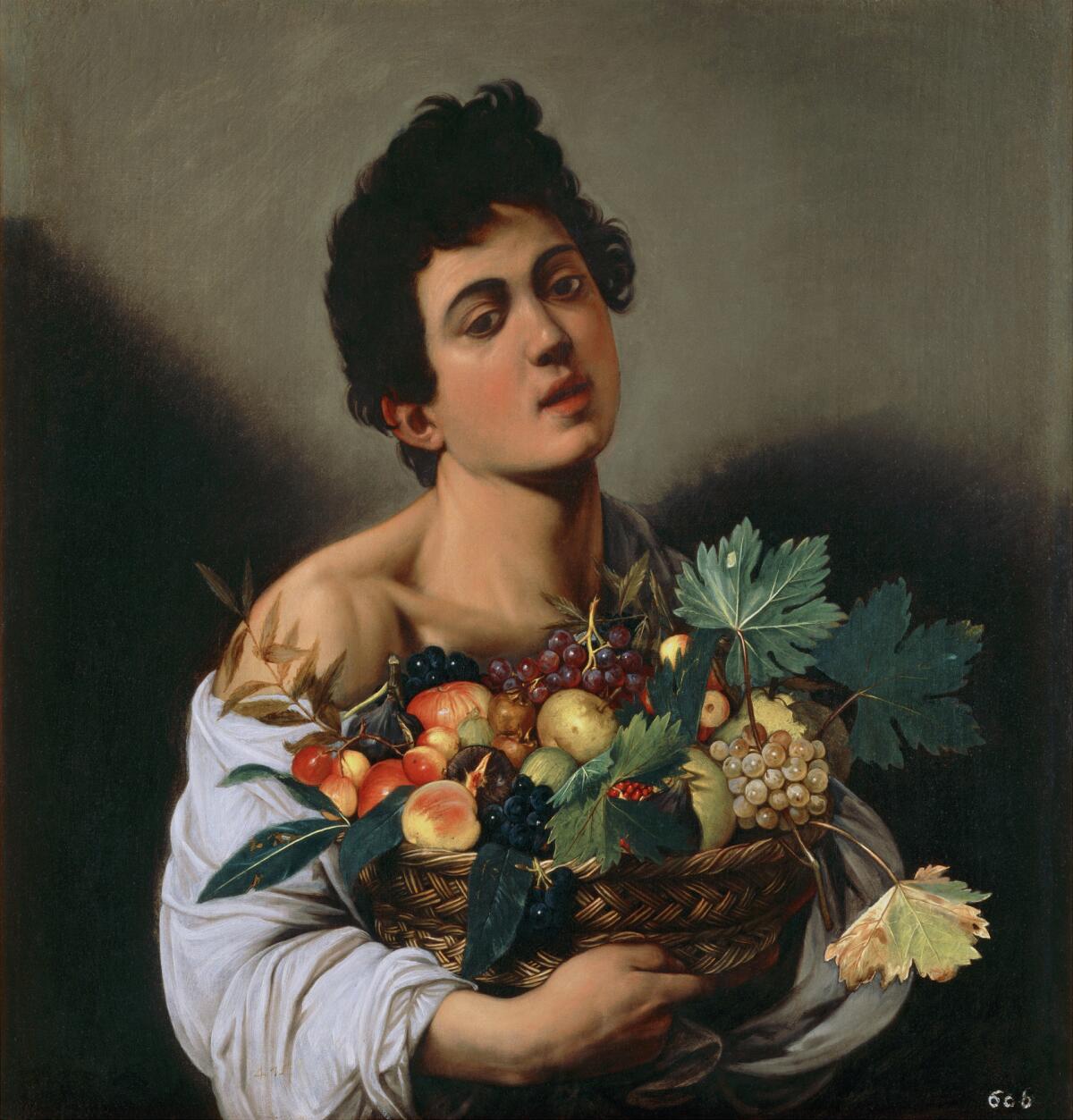Why ‘Boy With a Basket of Fruit’ is much more than a boy with a basket of fruit

A hurried passerby might look at “Boy With a Basket of Fruit” and think the simple title says it all. But Davide Gasparotto looks at the painting, and he sees more. He sees revolution.
Gasparotto is senior curator of painting at the Getty Museum, where “Boy With a Basket of Fruit” is one of three remarkable Caravaggio paintings on loan from the Villa Borghese in Rome. The Times asked Gasparotto to play tour guide, narrating a journey across one canvas painted around 1593-94.
“Boy With a Basket of Fruit,” on view through Feb. 18, was created during an early, particularly bohemian phase of Caravaggio’s life, Gasparotto said. Caravaggio had moved from Milan to Rome, taking shelter with a priest whom he dubbed Monsignor Salad because of the limited menu served in the home. Caravaggio needed to make paintings for the open market, not by commission, and “Boy With a Basket of Fruit” proved an early indicator of his subversive skill.

SIGN UP for the free Essential Arts & Culture newsletter »
For starters, Gasparotto said, note the extraordinary way the basket and its contents are rendered in still life. The apples, the figs, the speckled pear — they’re all painted with near-photographic precision, the realistic detail also expressed in the brown-edged, bug-bitten leaves spilling from the bounty.
The basket looks extraordinarily real and vivid, “but at the same time the painting is very artificial. It’s a totally staged scene,” Gasparotto said, noting the boy’s gaze toward the painter as well as his mouth. “The open mouth suggests he’s talking. That also was new — the suggestion of a little motion.”
Which brings us to yet another way Caravaggio rebelled against tradition: “Boy With a Basket of Fruit” is a still life, but it’s also a portrait.
The hierarchy of genres was important at the time. History paintings were deemed the most important, with landscape, portraiture and other genres occupying lower rungs on the painting ladder. Still lifes were at the bottom.
Caravaggio defied those boundaries, mixing portraiture and still life and history (with allusions to mythology in the fruit). He gave equal weight to the basket and to the boy, a painter friend named Mario Minniti who was 16 at the time.
“Caravaggio used to say that still life required as much artistry as painting figures,” Gasparotto said. “Boy With Basket of Fruit” proved him right, rejecting tradition and giving a young painter his place in the history of Renaissance art.
See all of our latest arts news and reviews at latimes.com/arts.
ALSO
Best art in 2017: Our critic's top 10 exhibitions, plus one very big worry
Music Center to renovate plaza and revamp restaurants overlooking DTLA
'Unsettled' explores the terrain — physical and political — of the West
The biggest entertainment stories
Get our big stories about Hollywood, film, television, music, arts, culture and more right in your inbox as soon as they publish.
You may occasionally receive promotional content from the Los Angeles Times.








